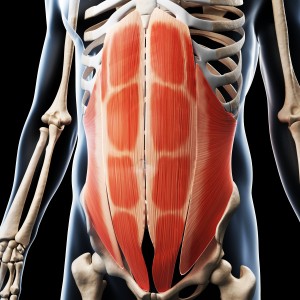Facioscapulohumeral Muscular Dystrophy (FSHD) Case Study Highlights Diaphragm Assessment in Nocturnal Hypoventilation

 Findings from a recent case report published online in the journal Respiratory Medicine Case Reports suggest that patients with Facioscapulohumeral muscular dystrophy (FSHD) with nocturnal hypoventilation should have their diaphragm assessed, because nocturnal hypoventilation can be treated effectively by non-invasive ventilation.
Findings from a recent case report published online in the journal Respiratory Medicine Case Reports suggest that patients with Facioscapulohumeral muscular dystrophy (FSHD) with nocturnal hypoventilation should have their diaphragm assessed, because nocturnal hypoventilation can be treated effectively by non-invasive ventilation.
Facioscapulohumeral muscular dystrophy (FSHD) is an autosomal dominant hereditary disorder with a restricted pattern of weakness and is the third most common form of muscular dystrophy. FSHD type 1 and 2 causes an asymmetric muscle involvement, particularly in the facial, upper extremity, trunk and lower extremity region with variable severity. FSHD patients may experience respiratory insufficiency if they have progressive weakness of respiratory muscles and/or a scoliosis, most likely when there are other signs of functionally severe impairment such as the need to use a wheelchair.
In their study titled “Facioscapulohumeral muscular dystrophy and respiratory failure; what about the diaphragm,” P. J. Wijkstra from the University of Groningen in The Netherlands and colleagues report a case of a male patient aged 68 years that presented with severe dyspnea while supine. The patient was diagnosed with Facioscapulohumeral muscular dystrophy (FSHD) type 1 in 2008. He also had psoriasis, high blood pressure for which he used bisoprolol, irbesartan, methotrexate and folate. The patient also had undergone surgery for penile carcinoma. His first complaints of muscle weakness were noticed at the age of 20 during a physical exam test. Exercise tolerance had been decreasing over the last 3–5 years. In the past year the patient also started having severe dyspnea whenever he was lying in supine position.
[adrotate group=”3″]
The patient was tired most of the time but could still walk a short distance and up a flight of stairs, but this caused shortness of breath, and a mild tachypnea. After full assessment the clinicians found that the patient had respiratory failure due to bilateral diaphragm paralysis as shown by the large drop in the vital capacity when changing from sitting to supine position in combination with paradoxical diaphragm movement during the sniff maneuver.
The clinicians concluded that this patient with FSDH had a diaphragm paralysis as the primary cause of ventilatory failure. The patient was successfully treated with non-invasive positive pressure ventilation.






